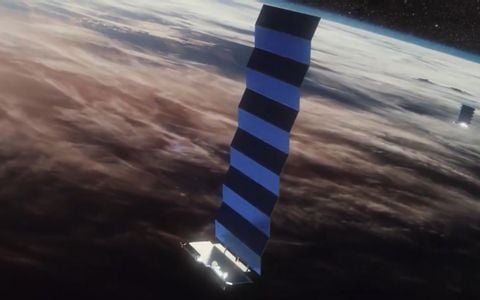SpaceX's Starlink Satellites Are A Major Issue For Astronomers
Astronomers are reportedly paying a heavy price for SpaceX's decision to launch thousands of Starllink communication satellites in space.
A new report claims that astronomers are paying a heavy price for SpaceX's aspirations to house thousands of communication satellites in space. Elon Musk-founded SpaceX launched dozens more Starlink satellites this week as part of its plans to provide low-latency broadband internet services around the world.
SpaceX has already launched more than 2,000 such satellites over the past couple of years and plans to launch thousands more in the future. The U.S. Federal Communications Commission (FCC) has granted SpaceX permission to launch up to 12,000 mini-satellites in space, so the problem will only go from bad to worse for researchers.
According to a new study published in The Astrophysical Journal Letters, the increasing number of satellites in low-Earth orbit is impacting important twilight observations. The report claims that the satellites are photo-bombing up to one in twenty images, while only one in two hundred images were affected back in 2019. According to an analysis of images taken by the Zwicky Transient Facility (ZTF) at Caltech's Palomar Observatory near San Diego between November 2019 and September 2021, a total of 5,301 streaks were caused by Starlink satellites in images taken by researchers. This is creating a problem for observations made at dawn or dusk, which are essential for detecting asteroids.
SpaceX Is Trying To Mitigate The Problem
Despite the satellites becoming a nuisance, it's not all doom and gloom. According to the researchers, science operations are not being strongly impacted just yet, as each streak is affecting only 0.1-percent of the pixels in any image. While that still means there's a risk the researchers will miss an important event, weather conditions actually pose a bigger threat. As explained by Universe Today, SpaceX is trying to reduce the satellites' impact on astronomy to the extent possible, and is adding sun visors to them to reduce reflections. However, researchers claim that the mitigation strategy is far from ideal even though it does reduce the brightness of these objects.
Fortunately, only twilight images are said to be affected by the streaks due to the Starlink satellites being located in low-Earth obit. However, things could change in the future, and that possibility is not something researchers are looking forward to. If other companies decide to join SpaceX by launching their satellites in higher orbits, it could also affect non-twilight images, potentially creating a massive problem for scientists trying to observe celestial events.





Post a Comment